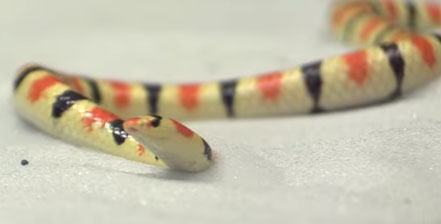Researchers with Georgia Tech wanted to know how certain reptiles move underneath a sand bed, so they studied two herps that are known to travel under
Researchers with Georgia Tech wanted to know how certain reptiles move underneath a sand bed, so they studied two herps that are known to travel under sand, the sandfish lizard (Scincus scincus) and the shovel-nosed snake (Chionactis occipitalis) to determine what species is more efficient at under sand travel.
Read More
How The Sandfish Lizard Has Helped To Build A Machine
The shovel-nosed snake is about 30 cm in length. It sports a shovel-shaped snout that enables it to quickly bury itself through sand and travel underneath the sand with little effort. The movement of the head created what the scientists called traveling waves in the snake’s body from head to tail, which created a tube in the sand that enabled the snake to swim through. Essentially the snake follows its own tracks through the sand. They super-glued lead markers onto the scales of the snake and were able to watch via x-ray as the snake effortlessly cruised under the sand bed’s surface. The markers fell off as the snake shed its skin.

Georgia Tech
The shovel-nosed snake moves effortlessly underneath the sand.
The sandfish lizard showed a bit more resistance, and once underneath the sand, didn’t use its limbs but rather its body to propel itself. The sandfish lizard created more movement and more energy to travel through the sand due in part to its body type. Its movement disrupted the sand while the snake’s movement did not. Furthermore, the snake has a slick body that is resistant to sand while the sandfish lizard does not.
The benefit of the study, which was supported by the National Science Foundation and the Army Research Office, will help address biological issues and help those who design robotics systems to better optimize energy expending issues with search and rescue robots.


